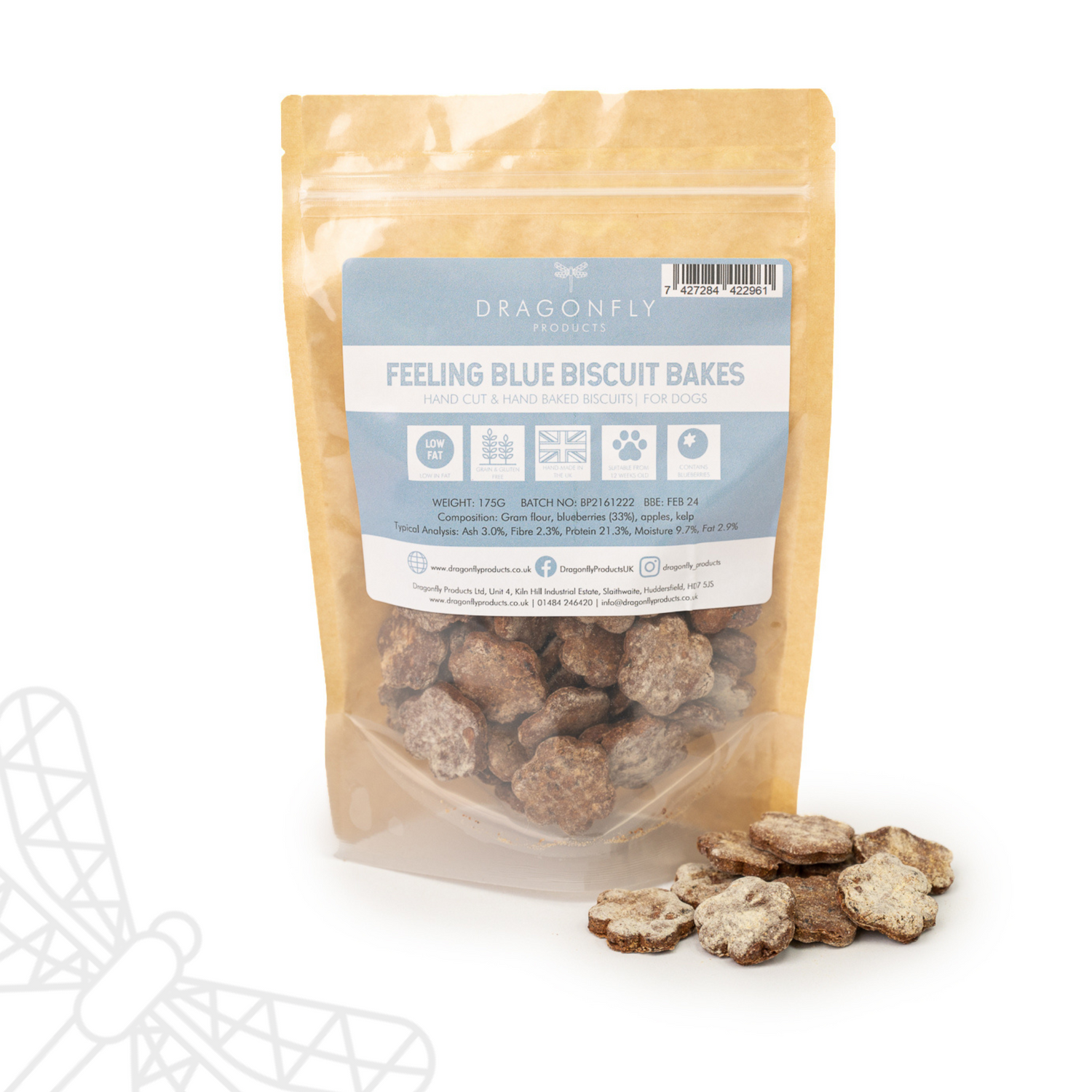
What to feed a dog with diarrhoea?
Why Chicken and Rice Isn’t Always the Best Choice
If you’ve ever had a dog with diarrhoea, you’ve probably heard the advice:
“Give them some plain boiled chicken and rice until they’re better.”
It’s the classic go-to recommendation from vets, breeders, dog forums, and well-meaning pet owners. And honestly, it’s not bad advice. Chicken and rice is bland, easy to digest, and simple to prepare. But here’s the thing—it’s not always the best choice for helping your dog’s tummy recover.
In fact, I’d argue that chicken and sweet potato is a much better option for most dogs. And if your pup is sensitive to chicken? Boiled white fish and sweet potato is a fantastic alternative.
Table of Contents
- Why Do People Recommend Chicken and Rice?
- The Problems with Chicken and Rice
- Why Sweet Potato Is a Better Choice
- But What About Chicken?
- How to Prepare Chicken (or Fish) and Sweet Potato
- When to Use This Diet (and When Not To)
- How to Transition Your Dog Back to Their Regular Food
- Final Thoughts: Feed the Gut, Not Just the Symptoms
Why Do People Recommend Chicken and Rice?
Chicken and rice became the go-to “sick dog food” because it’s:
- Bland and low in fat (good for upset tummies)
- Easy to digest
- Low fibre (which can help with loose stools in the short term)
- Simple, no added spices or oils
For short-term tummy upsets, this combo can work fine for some dogs. But it’s not perfect—and in some cases, it can actually make things worse.
The Problems with Chicken and Rice
Here’s why chicken and rice might not be ideal:
- Rice isn’t very nutrient-dense. White rice in particular is mostly simple carbohydrates, offering little fiber and few vitamins or minerals. It can spike blood sugar, which isn’t great if your dog is diabetic or prone to inflammation.
- Rice can ferment in the gut. Some dogs struggle to digest rice, especially if they already have digestive issues. Undigested rice can ferment in the intestines, leading to gas, bloating, or worsening diarrhoea.
- Some dogs are sensitive to chicken. It’s surprising, but chicken is actually a common food sensitivity in dogs. If your dog’s gut upset is allergy-related, chicken could be contributing to the problem rather than helping.
- Lack of fiber can slow recovery. When dogs have diarrhoea, we often think “cut the fiber!” But small amounts of soluble fiber (the gentle, gut-friendly kind) can actually help bind stools and feed healthy gut bacteria.
Why Sweet Potato Is a Better Choice
Sweet potatoes aren’t just delicious—they’re a superfood for poorly tummies. Here’s why they’re great for sick dogs:
- Gentle soluble fiber: Sweet potatoes are rich in soluble fiber, which absorbs excess water in the intestines and helps firm up loose stools.
- Natural prebiotics: Sweet potatoes contain resistant starch, a natural prebiotic that feeds the beneficial bacteria in your dog’s gut.
- Packed with nutrients: Unlike white rice, sweet potatoes are loaded with vitamins (like vitamin A, C, and B6), minerals (potassium, manganese), and antioxidants that support healing.
- Lower glycemic index: Sweet potatoes don’t spike blood sugar as rapidly as white rice, making them a better option for diabetic or inflamed dogs.
- Less likely to ferment: Sweet potatoes are generally easier on the gut and less prone to causing bloating or fermentation compared to grains like rice.
But What About Chicken?
Chicken is still a solid protein choice if your dog isn’t sensitive to it. It’s lean, mild, and easy to digest when boiled with no seasonings.
- Use skinless, boneless chicken breast or thighs
- Boil thoroughly until fully cooked
- Shred into small pieces
But if your dog has shown signs of a chicken allergy (itchy skin, ear infections, chronic diarrhoea, licking paws), it’s better to skip it and go for boiled white fish instead.
White fish like cod or haddock is:
- Low in fat
- Easy to digest
- Hypoallergenic for many dogs
- Mild in flavor
How to Prepare Chicken (or Fish) and Sweet Potato
Here’s a simple recipe to get you started:
Ingredients:
- 1 skinless, boneless chicken breast (or white fish fillet)
- 1 medium sweet potato
Instructions:
- Peel and chop the sweet potato into small chunks.
- Boil the sweet potato until soft (about 10-15 minutes).
- Boil the chicken (or fish) separately until fully cooked.
- Drain and mash the sweet potato.
- Shred the chicken (or fish) into small pieces.
- Mix together in a 2:1 ratio (2 parts sweet potato to 1 part protein).
Serve small amounts at a time—start with a tablespoon or two every few hours. If your dog keeps it down and improves, gradually increase the portion over 24–48 hours.
Always provide fresh water and monitor for vomiting, worsening diarrhoea, or other worrying signs. If symptoms persist more than 48 hours or worsen, call your vet.
When to Use This Diet (and When Not To)
This bland diet is great for:
- Mild vomiting or diarrhoea (without blood)
- Dogs recovering from minor tummy upsets
- Short-term feeding (2–3 days)
It’s not a long-term diet—it’s nutritionally incomplete for everyday feeding. And it’s not suitable if your dog:
- Has blood in stool or vomit
- Is very lethargic, collapsing, or in pain
- Shows signs of dehydration
- Has ongoing diarrhoea for more than 2 days
Always consult your vet if you’re unsure.
How to Transition Your Dog Back to Their Regular Food
Once your dog’s tummy has settled and they’re acting more like their usual self, it’s time to gradually move them off the bland diet and back to their normal food. But don’t rush it—a sudden switch could upset their stomach all over again.
Here’s a simple transition plan:
- Day 1: Mix 75% bland diet + 25% regular food.
- Day 2: Mix 50% bland diet + 50% regular food.
- Day 3: Mix 25% bland diet + 75% regular food.
- Day 4: Back to 100% regular food.
If at any point your dog’s stools get soft or they start vomiting again, slow the transition down. Go back a step or stick with the bland diet for another day before trying again.
Keep meals small and frequent at first, always provide fresh water, and avoid treats, table scraps, or rich foods for a few extra days. If your dog doesn’t seem to be improving—or symptoms return when you transition—check in with your vet.
Final Thoughts: Feed the Gut, Not Just the Symptoms
When our dogs are poorly, we naturally want to help them feel better fast. While chicken and rice is the old standby, chicken and sweet potato—or fish and sweet potato—is often a smarter choice for supporting the gut while being gentle and nourishing.
You’re not just filling their tummy—you’re helping their gut heal, their microbiome rebalance, and their immune system stay strong. And honestly, most dogs love the taste!
So next time your pup has an upset stomach, skip the rice. Reach for that sweet potato instead.
If your dog is suffering with a bout of diarrhoea, ensure that you give them a supply of fresh clean water at all time and that they continue to drink. Bone Broth is also excellent to keep hydration levels up. Kefir Water will help to hydrate and introduce 'good bacteria' into the system also.
If you want to help speed up the recovery process further, include a scoop of Dorwest Herbs Tree Barks Powder in with your bland diet recipe to help firm up poos and settle the tummy quicker.
For any further help and advice please contact us on 01484 246420 and why not join our social media channels and online community on Instagram, Facebook or YouTube.
With Wags and Woofs,
Laura, Dolly & Reggie


